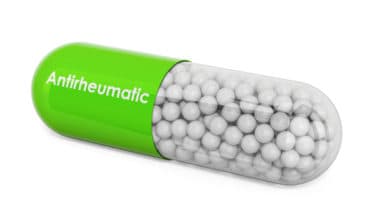Introduction: What are opioids?
Opioids are medicinal compounds, deriving originally from opium. There are so-called “weaker opioids” (codeine, dihydrocodeine) and stronger opioids (morphine, oxycodone, fentanyl, trenadyl and buprenorphine).
Opioid Use in Britain:
Fortunately, the UK does not yet have the same epic opioid crisis as witnessed in the USA, but there are worrying indications that we are not immune. In the USA there are 130 deaths daily attributed to opioid abuse.
Misuse in the UK is rising and so are the number of deaths. In 2016 there were 2,593 registered deaths related to drug misuse, an increase of 5% on 2015 and 58% higher than 2006. The number of drug related deaths is at its highest level since comparable records began in 1993.
It is thought that this worsening situation is due to two factors:
1/ The over-prescription of opioids by doctors.
2/ The incredibly easy availability of opioids from online pharmacies and other online sources.
Learning from America: How did the USA spiral into widespread opioid addiction?
Between 1995 and 2012, the number of opioid prescriptions handed out more than doubled. Since 2012, there has been in increased awareness of the problem and prescriptions numbers are reducing. But that’s of no consequence to the two million Americans who are currently addicted to prescription drugs.
The US opioid crisis has become a global conversation. These harrowing statistics indicate the speed at which the number of opioid-related deaths increased:
- Opioid overdoses increased 30 percent from July 2016 through September 2017 in 52 areas in 45 states.
- The Midwestern region saw opioid overdoses increase 70 percent from July 2016 through September 2017.
- Opioid overdoses in large cities increase by 54 percent in 16 states.
Partly to blame for this crisis is the American private healthcare system which fails to vet private interest against the wellbeing of patients. Pharmaceutical companies such as Purdue Pharma have been able to lie to doctors about the addictive quality of their opioids, in this case OxyContin.
Purdue Pharma sold their opioid-containing drugs to doctors with incorrect advice, meaning that doctors were prescribing without understanding the extremely addictive nature of this medication.
What can we learn and thus prevent happening in the UK?
It is vital to reverse the trend of over-prescription (for all medication).
1/ Roughly 21 to 29 percent of patients prescribed opioids for chronic pain misuse them.
2/ Between 8 and 12 percent develop an opioid use disorder.
3/ An estimated 4 to 6 percent who misuse prescription opioids transition to heroin.
4/ About 80 percent of people who use heroin first misused prescription opioids.
Just reading those statistics presents a clear deterrent for anyone considering administering or taking an opioid. To add to this though, opioids are not even particularly effective on long term pain.
Dr Cathy Stannard claims that opioid medications only work in one out of ten people. Pain is a ‘complex perceptual experience’ and is affected by a multiplicity of external and psychological factors. It is very difficult and imprecise to measure pain.
Her team’s evidence, and other research from the medical community, has suggested the limitations of opioid painkillers’ effectiveness in treating chronic pain.
Patients (and some doctors) are not fully informed or aware of the risks of dependence or the efficacy of such drugs.
Advice for patients (from the British Medical Journal):
1/ Opioid medicines are powerful painkillers but work best for short-term pain. They are less helpful for long-term pain.
2/ A small proportion of people with long-term pain may get benefit from opioids, and if you and your prescriber decide to try this out you should discuss a trial of treatment carefully.
3/ There are no medicines or other treatments that work well for long-term pain, so your healthcare team will work with you to make the impact of pain on your life as manageable as possible.
4/ If you are on high doses of opioids for long-term pain, this puts your health at significant risk. You should discuss with your prescriber a plan for slowly reducing the dose.
5/ Tell your healthcare team about your life, other problems you experience and the impact that long-term pain has on you so that they can support you in as many ways as possible.
Advice to the medical community:
We are in danger of concentrating too much on the final act of prescribing, the pressing of the ‘enter’ key and the spitting out from the printer the green piece of paper. – Andrew Green
The NHS has a prescribing culture; patients expect to be prescribed medication and doctors expect to prescribe it. This culture of over prescription is leading to many major problems; from antibiotic resistance to opioid misuse.
It can be very difficult to reduce prescriptions, because it seems like the most helpful thing you can do for a patient. But it is important to remember that doing nothing is often better than doing something.
- Figures from the United States show that roughly 21 to 29 percent of patients prescribed opioids for chronic pain misuse them.
- NHS Gloucestershire managed to save £750,000 by reducing prescriptions.
Doctors should consider prescribing less and ensuring that all patient are fully aware of the risks before accepting an opioid prescription.
Online drug-purchasing culture:
Online pharmacies make it too easy for patients with a dependence on opioids to purchase them without accountability or supervision from a GP or local pharmacist.
Drugs can be ordered cheaply in large batches and could lead the UK to swiftly follow the USA in the battle against the opioids.
- What is a seizure? - 13th March 2025
- Febrile Convulsions and Seizures in Children - 13th March 2025
- Why women are less likely to receive CPR or survive cardiac arrest - 6th March 2025






